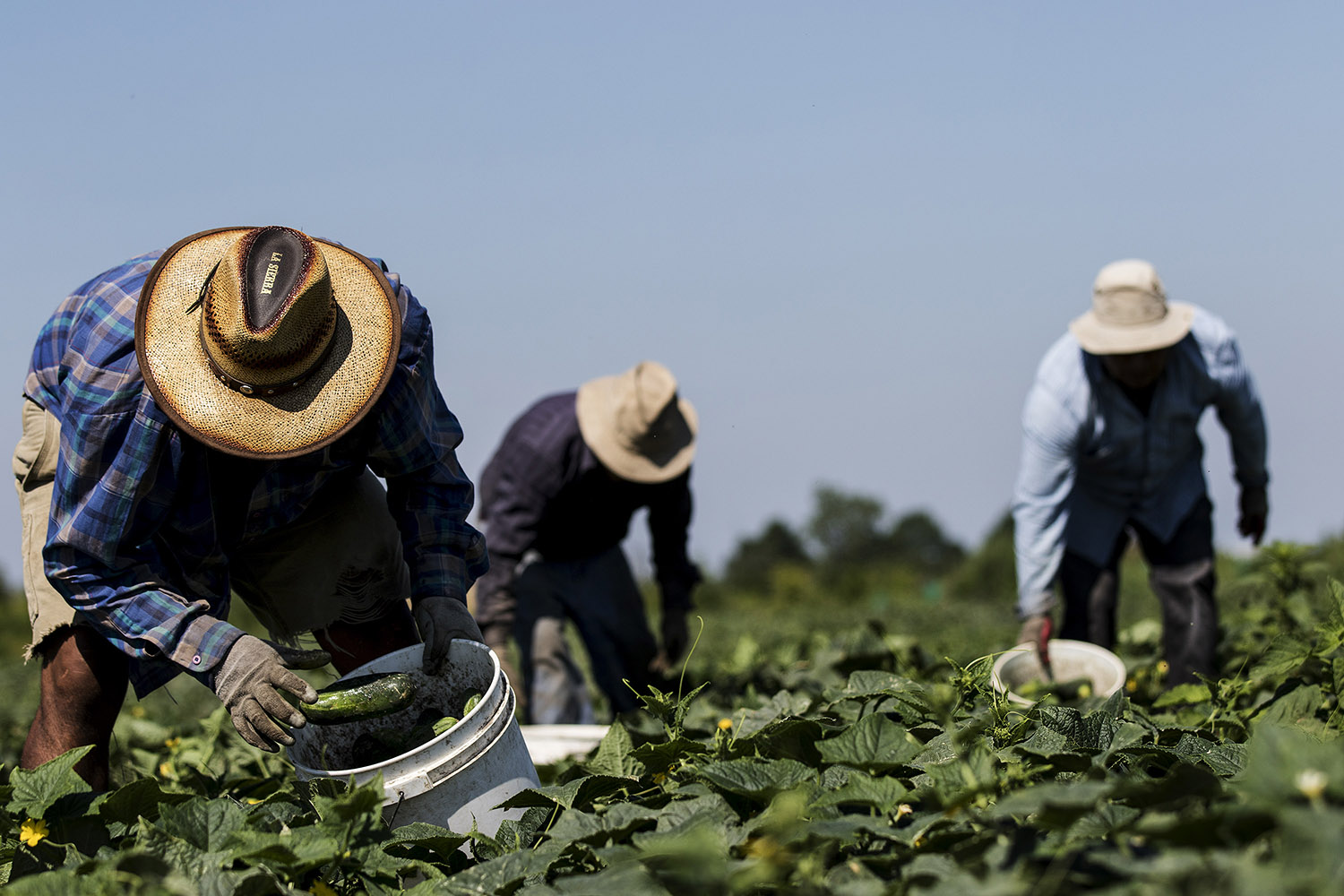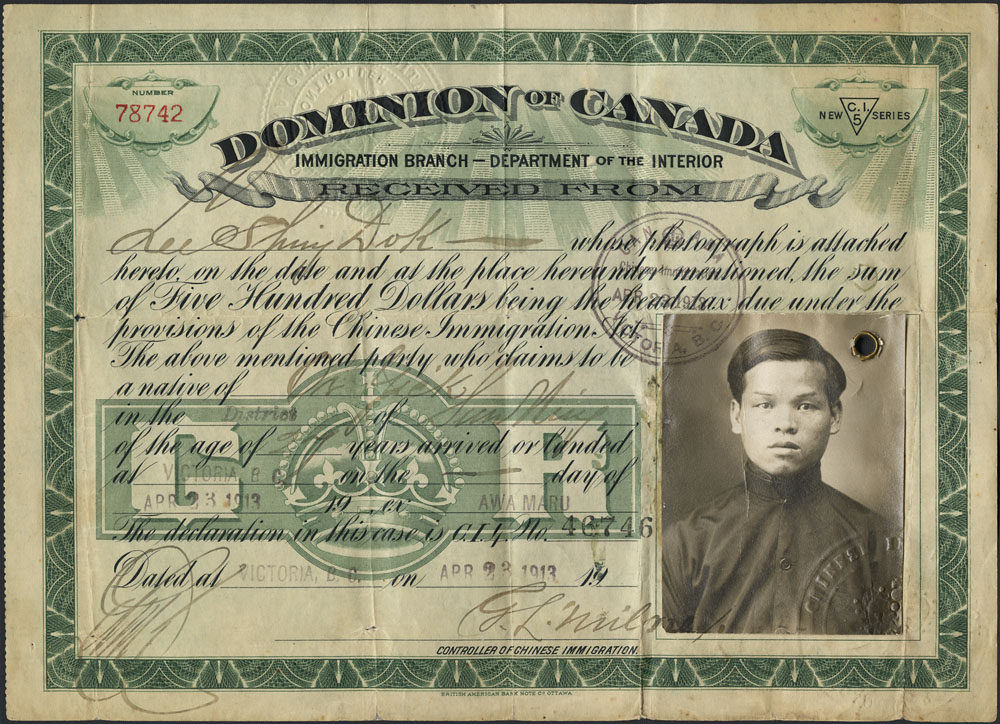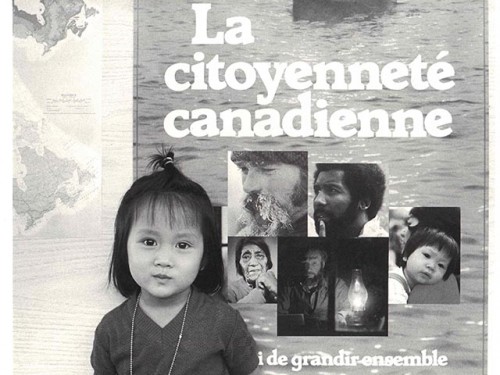Article
Alien Question
The earliest settlers of Upper Canada were normally American immigrants, free to take up land and enjoy the privileges of British subjects upon giving an oath of allegiance to the Crown.

Enter your search term
Signing up enhances your TCE experience with the ability to save items to your personal reading list, and access the interactive map.
Create AccountArticle
The earliest settlers of Upper Canada were normally American immigrants, free to take up land and enjoy the privileges of British subjects upon giving an oath of allegiance to the Crown.
"https://www.thecanadianencyclopedia.ca/images/tce_placeholder.jpg?v=e9dca980c9bdb3aa11e832e7ea94f5d9" // resources/views/front/categories/view.blade.phphttps://www.thecanadianencyclopedia.ca/images/tce_placeholder.jpg?v=e9dca980c9bdb3aa11e832e7ea94f5d9

Article
Temporary foreign worker programs are regulated by the federal government and allow employers to hire foreign nationals on a temporary basis to fill gaps in their workforces. Each province and territory also has its own set of policies that affect the administration of the programs. Canada depends on thousands of migrant workers every year to bolster its economy and to support its agricultural, homecare, and other lower-wage sectors. In 2014, there were 567,077 migrant workers employed in Canada, with migrant farm workers making up 12 per cent of Canada’s agricultural workforce. A growing labour shortage is projected to increase, with a study by the Conference Board of Canada projecting 113,800 unfilled jobs by 2025.
"https://d3d0lqu00lnqvz.cloudfront.net/media/media/3bf77737-2df1-42f7-a8c8-6660b9529dcf.jpg" // resources/views/front/categories/view.blade.phphttps://d3d0lqu00lnqvz.cloudfront.net/media/media/3bf77737-2df1-42f7-a8c8-6660b9529dcf.jpg

Article
The Canada‒United States Safe Third Country Agreement (STCA) is a treaty between Canada and the United States. It sets out the rules of refugee/asylum claims. This agreement stipulates that a refugee must claim asylum in the first country in which they arrive, either Canada or the US. This generally prevents refugee claimants’ entry into the neighbouring country. (See Canadian Refugee Policy.) Several challenges have been raised against the agreement. This was particularly the case after the election of President Donald Trump and his executive orders on immigration. Critics raised concerns about human rights protections in the US. In July 2020, a Canadian federal court judge ruled that the STCA is in violation of Canada’s Charter of Rights and Freedoms, and therefore unconstitutional. The decision was later overturned in April 2021 by the Federal Court of Appeal. (See Court System in Canada.)
"https://d3d0lqu00lnqvz.cloudfront.net/media/media/2c3a8635-2510-4bad-b39f-1027e90d7b17.jpg" // resources/views/front/categories/view.blade.phphttps://d3d0lqu00lnqvz.cloudfront.net/media/media/2c3a8635-2510-4bad-b39f-1027e90d7b17.jpg

Article
Migration is a unique experience for a child and Canada receives child migrants from all over the world. Some children come as unaccompanied minors and claim refugee status, some come alone and wait to be reunited with their families, while others are international adoptees by Canadian families.
"https://d3d0lqu00lnqvz.cloudfront.net/media/media/55e0c503-e9cf-4fb3-852d-7776eb9d9871.jpg" // resources/views/front/categories/view.blade.phphttps://d3d0lqu00lnqvz.cloudfront.net/media/media/55e0c503-e9cf-4fb3-852d-7776eb9d9871.jpg

Article
The Chinese head tax was enacted to restrict immigration after Chinese labour was no longer needed to build the Canadian Pacific Railway. Between 1885 and 1923, Chinese immigrants had to pay a head tax to enter Canada. The tax was levied under the Chinese Immigration Act (1885). It was the first legislation in Canadian history to exclude immigration on the basis of ethnic background. With few exceptions, Chinese people had to pay at least $50 to come to Canada. The tax was later raised to $100, then to $500. During the 38 years the tax was in effect, around 82,000 Chinese immigrants paid nearly $23 million in tax. The head tax was removed with the passing of the Chinese Immigration Act in 1923. Also known as the Chinese Exclusion Act, it banned all Chinese immigrants until its repeal in 1947. In 2006, the federal government apologized for the head tax and its other racist immigration policies targeting Chinese people. This is the full-length entry about the Chinese Head Tax. For a plain-language summary, please see Chinese Head Tax in Canada (Plain-Language Summary).
"https://d3d0lqu00lnqvz.cloudfront.net/media/media/876dbb1e-74e3-4cfe-b961-a6d31d296fd6.jpg" // resources/views/front/categories/view.blade.phphttps://d3d0lqu00lnqvz.cloudfront.net/media/media/876dbb1e-74e3-4cfe-b961-a6d31d296fd6.jpg

Article
The Chinese Immigration Act of 1923, known also as the Chinese Exclusion Act, banned the entry of virtually all Chinese immigrants for 24 years. Although migration into Canada from most countries was controlled or restricted in some way, only Chinese people were singled out completely from entering on the basis of race. The four exceptions to the exclusion were students, merchants (excluding laundry, restaurant and retail operators), diplomats and Canadian-born Chinese returning from education in China. The limit on absence from Canada was two years, and the consequence for not returning on time was being barred re-entry. Additionally, every person of Chinese descent, whether Canadian-born or naturalized, was required to register for an identity card within 12 months. The penalty for noncompliance was imprisonment or a fine of up to $500. Though the Act was repealed in 1947, immigration restrictions on the basis of race and national origin were not fully scrubbed until 1967.
"https://d3d0lqu00lnqvz.cloudfront.net/media/media/d0c5f1d6-6030-4a96-900c-3efed6463116.jpg" // resources/views/front/categories/view.blade.phphttps://d3d0lqu00lnqvz.cloudfront.net/media/media/d0c5f1d6-6030-4a96-900c-3efed6463116.jpg

Article
Canadian citizenship was first created in 1947 by the Canadian Citizenship Act. Today's version of the law says both Canadian-born and naturalized citizens are equally entitled to the rights of a citizen, and subject to the duties of a citizen. In 2014, the Strengthening Canadian Citizenship Act brought about the first significant amendments to the Citizenship Act since 1977. However, these changes were repealed or amended by legislation passed in 2017.
"https://d3d0lqu00lnqvz.cloudfront.net/media/media/65064bb6-ca40-4bee-af86-649144b1fc2e.jpg" // resources/views/front/categories/view.blade.phphttps://d3d0lqu00lnqvz.cloudfront.net/media/media/65064bb6-ca40-4bee-af86-649144b1fc2e.jpg

Article
Under the Constitution, the federal government has power, through immigration laws, to remove (or deport) foreign-born people from the country. The conditions for deportation have changed over the years, and deportation has been used for political as well as security purposes. Canadian deportation policy – often controversial – provides a window into the concerns of the state over the course of its history.
"https://d3d0lqu00lnqvz.cloudfront.net/media/media/2c3a8635-2510-4bad-b39f-1027e90d7b17.jpg" // resources/views/front/categories/view.blade.phphttps://d3d0lqu00lnqvz.cloudfront.net/media/media/2c3a8635-2510-4bad-b39f-1027e90d7b17.jpg

Article
The movement of individuals of one country into another for the purpose of resettlement is central to Canadian history. The story of Canadian immigration is not one of orderly population growth; instead, it has been — and remains one — about economic development as well as Canadian attitudes and values. It has often been unashamedly economically self-serving and ethnically or racially discriminatory despite contributing to creating a multicultural society (see Immigration Policy in Canada; Refugees to Canada). Immigration has also contributed to dispossessing Indigenous peoples of their ancestral lands.
"https://d3d0lqu00lnqvz.cloudfront.net/media/media/f3255eef-1ce7-4d5e-a9b7-052f4e35aad9.jpg" // resources/views/front/categories/view.blade.phphttps://d3d0lqu00lnqvz.cloudfront.net/media/media/f3255eef-1ce7-4d5e-a9b7-052f4e35aad9.jpg

Article
Immigration detention falls under the framework of administrative law — the person being detained has not committed a crime under Canada's Criminal Code, but is being detained for immigration reasons.
"https://d3d0lqu00lnqvz.cloudfront.net/media/media/cf0df282-ef35-4d21-bc52-5850c1ae6052.jpg" // resources/views/front/categories/view.blade.phphttps://d3d0lqu00lnqvz.cloudfront.net/media/media/cf0df282-ef35-4d21-bc52-5850c1ae6052.jpg

Article
Immigration policy is the way the government controls via laws and regulations who gets to come and settle in Canada. Since Confederation, immigration policy has been tailored to grow the population, settle the land, and provide labour and financial capital for the economy. Immigration policy also tends to reflect the racial attitudes or national security concerns of the time which has also led to discriminatory restrictions on certain migrant groups. (See also Canadian Refugee Policy.)
"https://d3d0lqu00lnqvz.cloudfront.net/media/media/81825b51-3f5c-4e72-bede-2c04ad6326b1.jpg" // resources/views/front/categories/view.blade.phphttps://d3d0lqu00lnqvz.cloudfront.net/media/media/81825b51-3f5c-4e72-bede-2c04ad6326b1.jpg

Macleans
This article was originally published in Maclean’s magazine on May 15, 2006. Partner content is not updated.
"https://www.thecanadianencyclopedia.ca/images/tce_placeholder.jpg?v=e9dca980c9bdb3aa11e832e7ea94f5d9" // resources/views/front/categories/view.blade.phphttps://www.thecanadianencyclopedia.ca/images/tce_placeholder.jpg?v=e9dca980c9bdb3aa11e832e7ea94f5d9

Macleans
Her face is round and smooth and she laughs often. She is a grown woman now, a wife and mother living in a modest apartment in the area of Toronto's east end known as "little" Chinatown.This article was originally published in Maclean's Magazine on February 10, 1997
"https://www.thecanadianencyclopedia.ca/images/tce_placeholder.jpg?v=e9dca980c9bdb3aa11e832e7ea94f5d9" // resources/views/front/categories/view.blade.phphttps://www.thecanadianencyclopedia.ca/images/tce_placeholder.jpg?v=e9dca980c9bdb3aa11e832e7ea94f5d9
